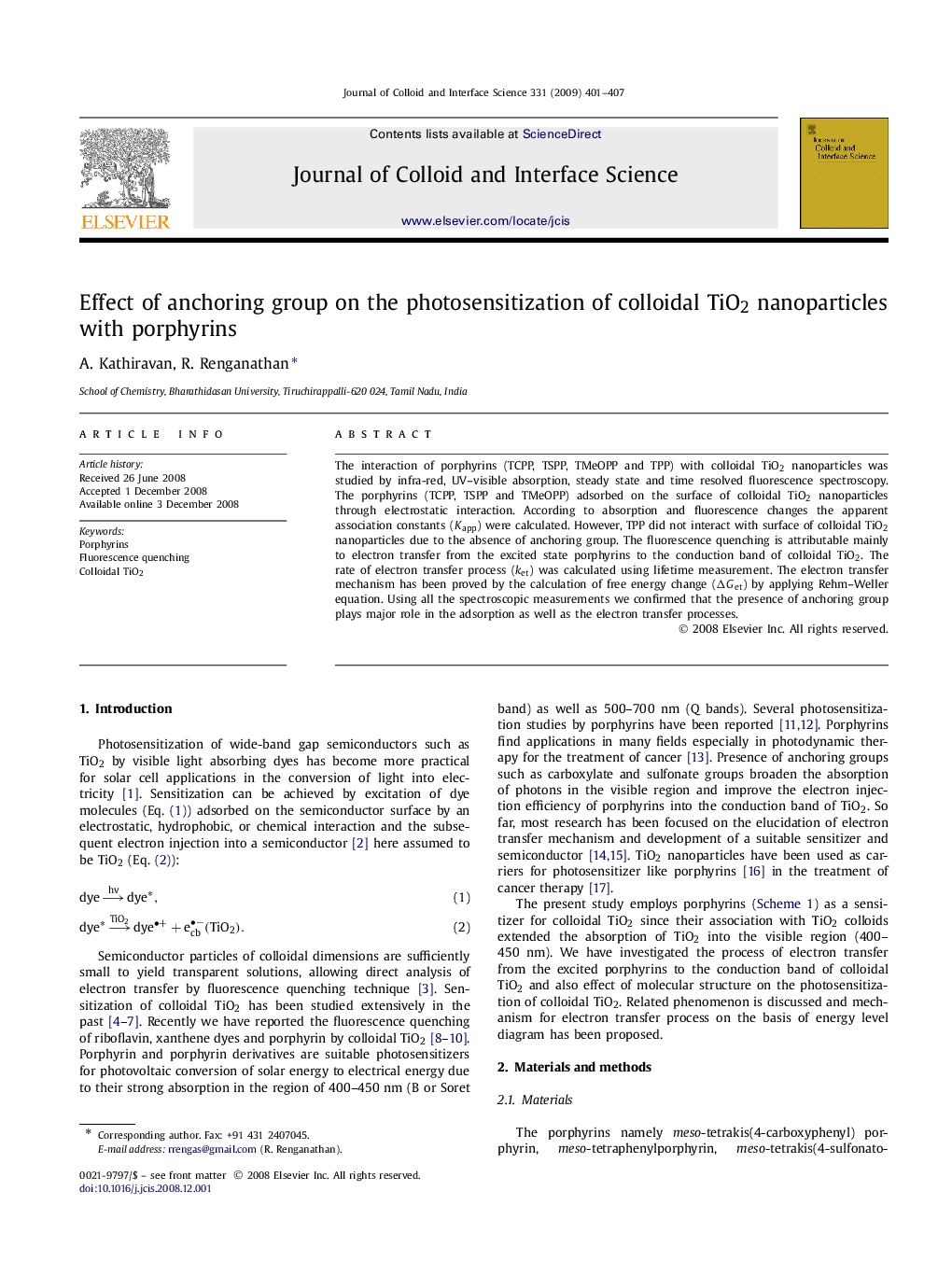| Article ID | Journal | Published Year | Pages | File Type |
|---|---|---|---|---|
| 610837 | Journal of Colloid and Interface Science | 2009 | 7 Pages |
The interaction of porphyrins (TCPP, TSPP, TMeOPP and TPP) with colloidal TiO2 nanoparticles was studied by infra-red, UV–visible absorption, steady state and time resolved fluorescence spectroscopy. The porphyrins (TCPP, TSPP and TMeOPP) adsorbed on the surface of colloidal TiO2 nanoparticles through electrostatic interaction. According to absorption and fluorescence changes the apparent association constants (KappKapp) were calculated. However, TPP did not interact with surface of colloidal TiO2 nanoparticles due to the absence of anchoring group. The fluorescence quenching is attributable mainly to electron transfer from the excited state porphyrins to the conduction band of colloidal TiO2. The rate of electron transfer process (ketket) was calculated using lifetime measurement. The electron transfer mechanism has been proved by the calculation of free energy change (ΔGetΔGet) by applying Rehm–Weller equation. Using all the spectroscopic measurements we confirmed that the presence of anchoring group plays major role in the adsorption as well as the electron transfer processes.
Graphical abstractThe molecular interaction of porphyrin adsorbed on the surface of colloidal TiO2. TCPP adsorbed on the surface of TiO2 through its anchoring group, but TPP shows no interaction with TiO2, due to the absence of anchoring group.Figure optionsDownload full-size imageDownload as PowerPoint slide
